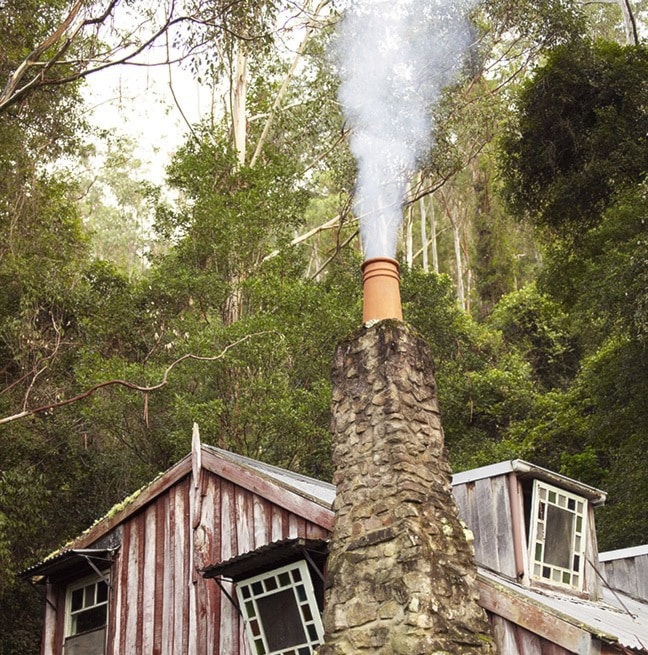Terry Farrell
Record staff
Changes to the solid fuel burning domestic appliance regulation (SFBDAR) will improve air quality in communities throughout British Columbia moving forward, but do little to address the current problem of high levels of particulate matter due to residential wood burning.
The Ministry of Environment announced the changes on Wednesday, which will affect purchasers of new wood-burning appliances.
Such appliances (i.e. wood and pellet stoves) sold in B.C. will have to meet stricter emissions standards, which will result in an immediate 40 per cent reduction in maximum emissions for new wood stoves.
(The SFBDAR was first implemented in 1994, introducing, among other things, certification of wood-burning stoves.)
“An uncertified stove generates about 50 to 60 grams per hour of fine particles,” said Earle Plain, an air quality meteorologist with the Government of British Columbia. “The current standard is about 7.5 grams per hour. What we are doing now, is taking it one step further... to see the emissions from certified stoves drop down to 4.5 grams per hour.
“So that’s step one. By 2020, we will go down to 2.5 grams per hour, so very, very clean.”
Under the existing regulation, several wood heating devices are exempt from meeting emission standards. This update will ensure all appliances are subject to the same standards.
For example, outdoor wood boilers, which emit large quantities of smoke, will not only have to meet the new standards, they will also have to be installed in a manner that minimizes risks to neighbours and the community.
New outdoor boilers will be subject to a specific setback from property lines which will limit installation of these high-polluting appliances to large lots in rural areas.
Additionally, a sunset date has been established for high-emitting outdoor boilers that will see them banned in 10 years, resulting in a reduction in pollution for rural communities and their residents.
Other new provisions under the updated SFBDAR include:
• Clarifying what fuels can and cannot be burned in an appliance
• Prohibiting the sale of appliances that are not certified to meet the emission standards
• Requiring vendors to keep records demonstrating the appliances they sell are certified
• Creating 15 new offences that can be penalized under the Environmental Management Act in the form of tickets, court-ordered penalties, and/or administrative penalties.
Existing equipment
While the new regulations address all future purchases, and will cut back emissions in the long run, it doesn’t address the offending stoves - the ones already in existence, which are responsible for the poor air quality so often reported in the Comox Valley, particularly in the winter months.
“In terms of existing stoves, (new regulations) are not going to help much, unless those stoves are changed out,” said Plain. “There is a provincial wood stove exchange program available to communities, but it takes time for people to (comply). Right now, the current regulation ... doesn’t really affect existing wood stoves. It really comes down to a targeted wood stove exchange program, or the local government taking additional steps.”
There is no information available to indicate how many uncertified stoves remain in circulation.
“We did a survey back in 2013 to try to identify that in more solid terms, but I don’t know how successful that was. There are communities within the province doing door-to-door surveys, to get a better handle on how aggressive they need to be on a wood stove changeover process, so that’s something that can be done at the local level.”
Many communities have taken pro-active approaches to eliminating uncertified stoves.
“Port Alberni, for instance, has (a bylaw) where upon a sale of a home, an uncertified wood stove has to be removed and replaced with a certified stove, or some other form of heating,” said Plain. “Those types of things are available to local governments, but (dealing with existing uncertified stoves) is not something the provincial government would do.”
Earlier this year a citizens’ group, Breathe Clean Air Comox Valley, made a presentation at a Comox Vally Regional District committee of the whole about poor air quality in the Comox Valley. The group is concerned about the health impacts of wood smoke. In May, representatives asked the CVRD to establish an air quality advisory council, and to come up with actions to reduce wood smoke in the region. To date, no changes have been made.
“They wanted us to prove that it was wood stoves that was a problem before they started regulating them,” said Jennell Ellis, a volunteer with BCACV and one of the representatives at the May meeting. “It is clearly a wood stove issue. The readings go up at night when people come home and light their stoves, and it goes down during the day. Slash burning is definitely a problem, but ... wood stoves are clearly an issue. There need to be regulations at the municipal and district levels.”
The Village of Cumberland recently installed an air quality monitor, to study the issue in that community.
“They wanted more data... I think they will be very surprised at the results, because Cumberland’s air is quite bad,” said Ellis. “That might be the impetus for all the municipalities to act.”
For more information on the new regulations, visit www.env.gov.bc.ca/epd/codes/solid-fuel/
(With files from the Government of BC)
